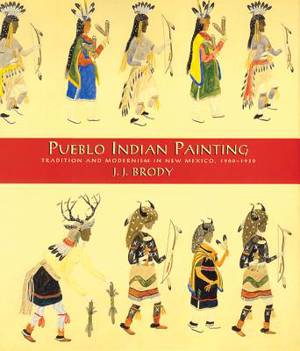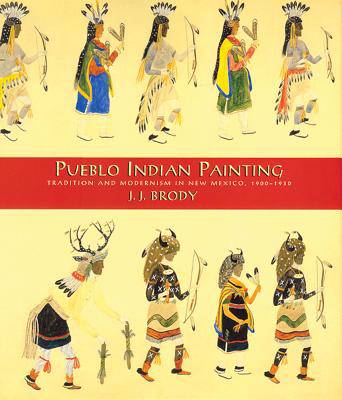
- Retrait gratuit dans votre magasin Club
- 7.000.000 titres dans notre catalogue
- Payer en toute sécurité
- Toujours un magasin près de chez vous
- Retrait gratuit dans votre magasin Club
- 7.000.0000 titres dans notre catalogue
- Payer en toute sécurité
- Toujours un magasin près de chez vous
Pueblo Indian Painting Tradition and Modernism in New Mexico, 1900-1930
J J BrodyDescription
A new tradition of Pueblo fine art painting arose in the first three decades of the twentieth century, born out of a dynamic encounter between the Pueblo and Euro-American communities in and around Santa Fe, New Mexico. Traditional Pueblo art supported community values and was integral to the ritual and daily life of the people, but the painting style that developed after 1900 was novel in every way, involving new subject matter, new media, and a new audience of Euro-American artists, intellectuals, and art patrons. The young Pueblo artists who created the new genre merged their Pueblo traditions with the aesthetic principles of Euro-American modernism to create an entirely new art form emblematic of the changing relationship between the two cultures.
In Pueblo Indian Painting, art historian J. J. Brody presents the first complete history of this vibrant art. Based on the extensive Pueblo painting collections of the School of American Research and richly illustrated in color and black and white, the book examines the achievements of seven artists who were key to the evolution of Pueblo painting: Fred Kabotie and Otis Polelonema of Hopi, Velino Shije Herrera of Zia, and Crescencio Martinez (Ta'E), Tonita PeÒa (Quah Ah), Alfonso Roybal (Awa Tsireh), and Abel Sanchez (Oqwa Pi) of San Ildefonso. Brody also explores the role played by the patrons who supported and promoted the Pueblo artists' work, individuals such as Mary Austin, Alice Corbin Henderson, Edgar Lee Hewett, Oliver La Farge, Mabel Dodge Luhan, John Sloan, and Amelia Elizabeth White. Pueblo Indian Painting places this important but under-appreciated fine art tradition squarely within the contexts of Pueblo culture and Euro-American modernism, bringing long-overdue recognition to the tradition and its preeminent practitioners as a vital part of American art history.
Spécifications
Parties prenantes
- Auteur(s) :
- Editeur:
Contenu
- Nombre de pages :
- 238
- Langue:
- Anglais
Caractéristiques
- EAN:
- 9780933452459
- Date de parution :
- 01-05-97
- Format:
- Livre relié
- Format numérique:
- Genaaid
- Dimensions :
- 259 mm x 305 mm
- Poids :
- 1546 g

Les avis
Nous publions uniquement les avis qui respectent les conditions requises. Consultez nos conditions pour les avis.






